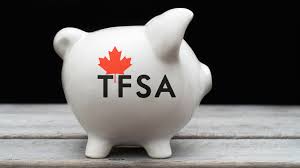Tax Changes Canadians Need to Know About for 2020
Jan 22, 2020 | TAX BENEFIT
Tax Changes Canadians Need to Know About for 2020
Rates and Limits
As expected, several tax rates and limits are changing in 2020.

Federal and provincial income tax brackets are increasing to keep up with inflation.
Employment Insurance (EI) Premiums are decreasing from 1.62% in 2019 to 1.58% in 2020.
Maximum pensionable earnings, the amount used by the government to calculate Canada’s Pension Plan contributions for the year, is increasing to $58,700 in 2020, up from $57,400 in 2019. Similarly, the employee and employer contribution rates for 2020 will be increasing by 5.25%, up from 5.1% in 2019.
As was the case last year, the Canada Child Benefit will continue to be indexed to inflation. In 2020, the maximum a parent can receive is $6,639 for children under age 6 (up from $6,496 in 2019) and $5,602 for children ages 6 to 17 (up from $5,481 in 2019).
Tax-Free Savings Account Contribution Limit Increased
In 2020, the annual contribution limit on the Tax-Free Savings Account (TFSA) is once again being upped. In 2019 the TFSA annual contribution limit was upped by $6,000 for the first time. In 2020 it’s more of the same as the TFSA is increasing by $6,000 again. If you’ve never contributed to the TFSA and you’ve been eligible to contribute since 2009, you’d have $69,500 in total contribution room.

As the name implies, your money grows tax-free in the TFSA. What sets it apart from the Registered Retirement Savings Plan (RRSP) is that you don’t have to pay income tax when you cash out your money.
Canada Training Benefit
The federal government introduced the Canada Training Benefit to help with disruption in the labor force due to changes in technology. This refundable tax credit is designed to lower the barrier to professional development and to provide financial support to help pay for half of the tuition and training fees. As a worker, you’ll be eligible to receive up to $250 annually as a tax credit. This amount goes into a notional account, which the worker can use for eligible purposes.
To be eligible to accumulate $250 in a year, you must meet the following criteria:
File a tax return for that year
Be at least 26 years old and no older than 65 years old at the end of the year
Be a Canadian resident during the year
Have eligible earnings of minimum $10,000 and maximum $150,000 in the year (this includes employment, self-employment, and maternity and parental benefits)
To help make it easier to keep track of your notional account balance, it will be communicated each year on the Notice of Assessment you receive from the Canada Revenue Agency (CRA) after you file your income taxes. In any given year you can claim the lesser of the balance in your notional account and half of eligible tuition and fees paid in the year.
Home Buyers’ Plan
The home buyers’ plan (HBP) assists first-time homebuyers in attaining a down payment sooner. It allows those buying a home for the first time to withdraw money from their RRSP without paying any tax. Any money borrowed under the HBP must be paid back over 15 years, beginning in the second year after your initial withdrawal was made. Only funds that have been in your RRSP for at least 90 days can be withdrawn as part of the HBP.

After being frozen for several years, the federal government has increased the withdrawal limit on the HBP as part of the 2019 federal budget. Effective March 19, 2019, those eligible to participate in the program can withdraw up to $35,000 from their RRSP, up from $25,000 in previous years. This means that a couple buying a home together could withdraw a combined $70,000 from their RRSPs to buy their first property.
There are special rules in place if you’re acquiring a home for an individual who’s eligible for the disability tax credit (DTC). The rules are being updated so that the same $35,000 withdrawal limit is provided to those buying a home that’s more accessible and better suited for people with disabilities.
The budget also made it easier for those who suffer a breakdown of a marriage or common-law partnership. Under the new rules, individuals who suffer a marriage or common-law relationship breakdown who have been living apart from their spouse or common-law partner for a minimum of 90 days due to the breakdown in the relationship, may be eligible to participate in the HBP, even if the other eligibility criteria aren’t met. An individual in this situation could make a withdrawal from the HBP provided they are living separately from their spouse or partner at the time of withdrawal and have been living on their own within the year of the withdrawal or at any point in any in the four prior years. However, someone would only be eligible to participate under this exception provided they aren’t living in a home occupied by their new spouse or common-law partner.
Someone who decides to participate in the HBP under these circumstances will have two years after the HBP withdrawal takes place to sell their previous principal residence. However, for someone buying out the share of their spouse or common-law partner, this requirement is waived.
Basic Personal Amount
The basic personal amount is a non-refundable tax credit that all taxpayers are eligible to claim. The basic personal amount is the amount you can earn without paying any income tax. The amount, currently at $12,069 in 2019, is set to rise annually with inflation. However, the Liberals have promised to increase it more quickly. The basic personal amount will increase by 15% over the next four years, reaching $15,000 in 2023.
However, not everyone will be entitled to this tax break. The wealthiest Canadians, those earning more than $147,667 in the second highest tax bracket, will have the basic personal amount reduced, with those earning more than $210,371 not receiving any tax break at all for the basic personal amount.
Employee Stock Options
In the 2019 Federal Budget, the Liberals indicated their intention of changing how employee stock options are taxed. Currently, employees can claim a deduction of 50% of employee stock option benefits when the option is exercised, resulting in similar tax treatment to capital gains.
The new rules will put an annual limit of $200,000 on employee stock options for any employees who are part of a “large, long-established” business. The limit will be based on the fair market value of the employee stock options when the shares are granted.
The change to the taxation of employee stock options is to bring Canada’s tax treatment more in line with the U.S. (Note: this tax change wouldn’t affect employees in start-ups or rapidly growing Canadian firms, who wouldn’t be subject to the limit.)
Tax Breaks for Seniors
The Liberals have promised to increase Old Age Security (OAS) by 10% for seniors older than 75 years of age earning less than $77,580. The change will mean an increase of $729 annually in OAS starting in July 2020.

The Liberals are also promising an enhancement to the survivor benefit of Canada Pension Plan (CPP). The maximum pensionable earnings will increase to $58,700, up from $57,400. In addition, a surviving spouse, over the age of 65 and not otherwise receiving CPP benefits, will be able to get 60% of their deceased spouse’s pension. Under the change, it would mean an increase of $2,080 annually. Survivors between 60-64 years of age are eligible for 37.5%.
Tax Breaks for Parents
Being a parent isn’t cheap these days. With a lack of affordable childcare, the federal government is looking to give new parents a tax break.
The federal government has made a pledge that any maternity or parental benefits received through EI will be tax-exempt at source, beginning in 2020. This change means an extra $1,800 a year for someone who receives EI benefits and earns $45,000 a year.
The Liberals are also promising a 15-week leave for adoptive parents receiving EI benefits, the same length as maternity leave.
The popular Canada Child Benefit is also slated for an increase. The tax-free benefit will increase for new parents with kids under one years old. The 15% boost will mean an increase of as much as $1,000 for some parents. In July 2020, the base benefit is expected to be $7,750.
For parents of disabled children, the Child Disability Benefit is expected to double. The benefit is for families looking after a child under the age of 18 with disabilities who currently receive the DTC. The increase could mean more than $2,800 extra in the pockets of parents.
Rule Changes for Multi-Unit Residential Properties
Under normal circumstances when you convert a property from a rental property to residential property (or the other way around); you’re considered to have disposed of and reacquired the property. However, for changes in use after March 18, 2019, the 2019 federal budget has proposed to let you elect that this deemed disposition doesn’t apply. This allows you to defer paying capital gains taxes on the property until a future disposition.

In addition, when the property is being converted to or from a principal residence, you can designate the property as your principal residence for up to four more years before or after the period for which you can otherwise claim the tax exemption for a principal residence.
Advanced Life Deferred Annuities
The 2019 budget brought in changes so that Advanced Life Deferred Annuities (ALDA) are considered qualifying annuities that can be purchased under RRSP, Registered Retirement Income Funds (RRIF), Deferred Profit Sharing Plans (DPSP), Pooled Registered Pension Plans (PRPP) and defined contribution registered pension plans. (An ALDA is a life annuity that may start as late as the end of the year in which you reach age 85.)
Registered Disability Savings Plan
The 2019 federal budget is getting rid of the time limit that a Registered Disability Savings Plan (RDSP) may stay open after the beneficiary is no longer eligible for the disability savings plan. It’s also getting rid of the need for a medical certificate stating that the beneficiary is likely to become eligible again in the future for the DTC in order for the plan to stay open.
Kinship Care Providers
Kinship care programs are an alternative to foster care offered by provinces and territories. The Income Tax Act (ITA) is being amended to say that you may qualify for the Canada workers benefit tax credit, regardless of whether you get financial help from a kinship care program. Changes will also be brought in to clarify that payments of financial assistance from a kinship care program are not taxable nor to be included in income when determining tax benefits and credits.
Cannabis as a Medical Expense
To reflect the fact that cannabis is legal in Canada, the federal government will be amending the ITA. You can claim a medical expense tax deduction for any cannabis products that you buy as a patient after October 16, 2018.

